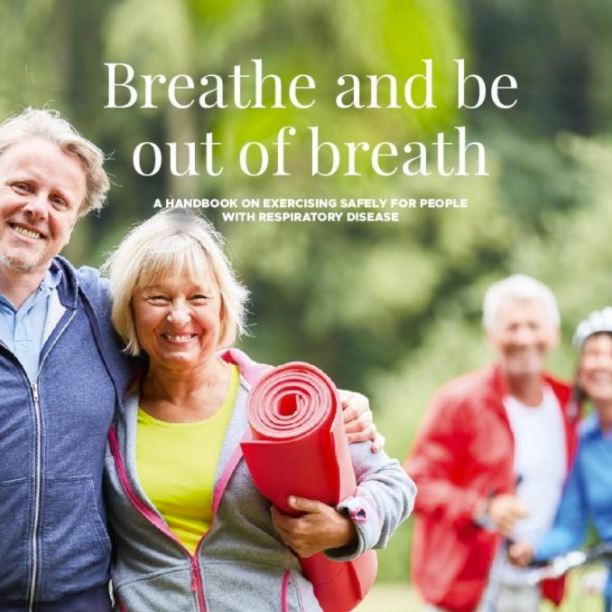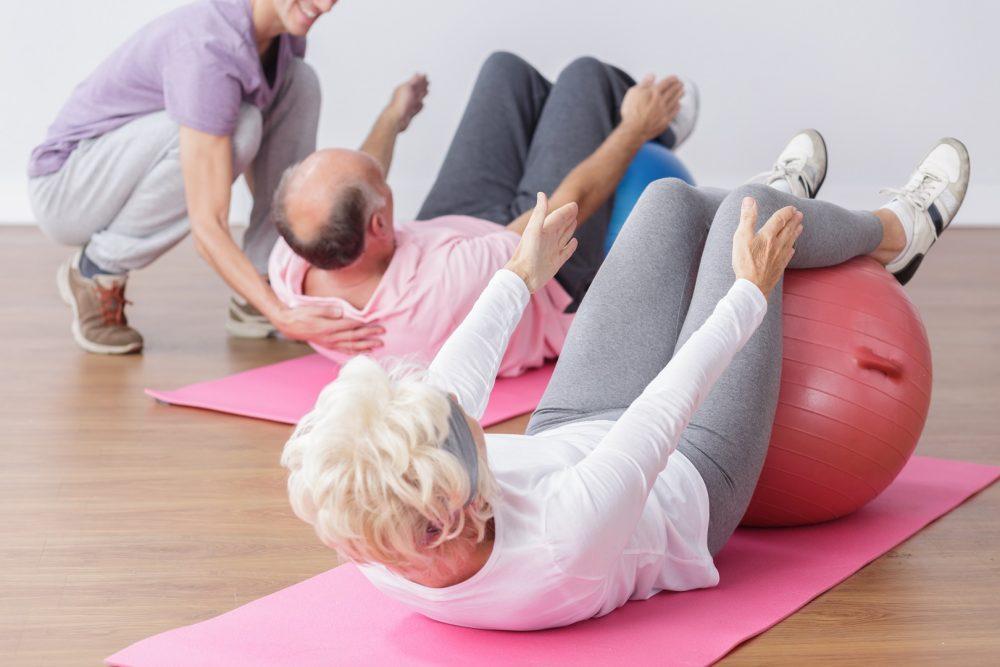Exercise is an important part of self-care for people with respiratory diseases. Cardiovascular exercise is a good breathing exercise in itself. Muscle strength helps maintain a good posture and functional ability in everyday life.
The benefits of physical exercise include:
- better tolerance to exertion
- fewer and less severe exercise-induced symptoms (shortness of breath, mucus secretion, wheezing, and coughing)
- better physical performance and ability to function
- stronger respiratory muscles
- improved pulmonary ventilation
- fewer flare-ups and shorter recovery time
- enhanced removal of excess mucus from the airways
- better mood and quality of life
- helping you relax and gather energy for daily tasks.
Related content
- Recommended types of exercise
- Breathing and shortness of breath
- Health, sports and fitness professionals
Other topics that may interest you
Exercise for people with respiratory diseases
People who suffer from respiratory diseases can still participate in almost all forms of physical exercise. However, it is always best to take breaks during exercise. You should regularly exercise to the point that you sweat.
The following exercise tips are targeted at people with respiratory diseases. The exercises are safe and easy, and they can be done alone or with others.
Please note that people who require supplementary oxygen during exertion should follow their physician’s instructions for the administration of oxygen.
Exercising after a flare-up
Just two weeks of immobility reduces physical capacity and muscle strength considerably. It is important that people with respiratory diseases start exercising as soon as possible after a flare-up, according to their own capabilities. It is recommended to increase the intensity level gradually as your state improves.
It is safe to exercise after a flare-up. This will also reduce the risk of hospitalisation. If necessary, you can see a physiotherapist for personal instructions and advice.
Warming up before exercise
Pre-workout warm-ups and post-workout stretches are important parts of exercise. A pre-workout warm-up helps prepare the body and lungs for the workout. It also helps prevent exercise-induced symptoms.
Incidental activity and endurance exercise
To achieve the best health benefits, supplement your incidental activity with endurance exercise a few times per week.
The recommended amount of moderate aerobic exercise is 2 hours and 30 minutes per week. Alternatively, you can do vigorous exercise for 1 hour and 15 minutes per week.
In addition to incidental everyday activity and endurance exercise, you need to do muscle strength and balance exercises at least twice a week.
You can spread out your daily exercise throughout the day.
Pay attention to the following in your everyday life:
- Reduce the time you spend sitting down.
- Opt for incidental activity in your everyday life. Take the stairs instead of the lift and go to work on foot.
- Try to reach 10,000 steps per day.
- Don’t forget the importance of sleep and a varied diet.
To watch the video, please accept the marketing cookies.
Interval training
Sports which train the major muscle groups of the body are good for improving endurance. These types of sports include walking, Nordic walking, skiing, cycling, swimming, ball games, pool running, and dancing. Endurance exercise gets you out of breath and increases your heart rate.
Interval training is well suited to people with respiratory diseases. Interval training refers to alternating between short, high-intensity exercise and slower recovery phases. During the slower phases, the body recovers, which means that symptoms have no time to develop. The slow phases should be three times longer than the high-intensity phases.
If you tend to get symptoms from exercise easily, make the high-intensity phase shorter in relation to the slow phase. For example, a 10-second high-intensity burst with a 30-second rest period improves your endurance, if you keep going like this for at least 20 minutes.
Tip: You can monitor your exercise-induced symptoms with a PEF meter. Do the test before and after the workout. You can find instructions for doing a PEF test on the YouTube channel of the Organisation of Respiratory Health.
Strength training
It is recommended to do strength training at least twice a week. Strength training is important for the functional capacity of people with respiratory diseases, since it also strengthens the bones.
It is especially important to increase muscle strength if the respiratory disease causes unintentional weight and muscle loss. Ageing and certain medications, such as cortisone tablets, may also decrease muscle strength.
In strength training, the focus should be on upper and lower limb exercises. You should also pay attention to your core and upper back muscles, which affect your posture. Abdominal muscles provide support for respiratory muscles and during coughing. Muscle strength can be increased not only at the gym but also by doing bodyweight exercises with small exercise equipment, such as ankle weights.
People often tolerate strength training better than endurance exercise, as it does not increase the body’s need for oxygen as much. Poor muscle strength can increase shortness of breath during exercise.
Tips:
- When you exercise standing up, your body needs more oxygen than when you exercise in a seated position.
- Your oxygen consumption is also lower when you only exercise one leg or arm at a time.
Recovery and muscle health
Sometimes you need to take breaks during exercise. By taking breaks, you can exercise longer.
Post-workout warm-up and stretching help the body recover from exertion. They also remove lactic acid from the muscles and reduce muscle soreness. Stretching is part of keeping your muscles healthy.
After the workout, stretch the muscles you exercised for about 30 seconds. You can do long stretches within a couple of hours after the workout. Pay particular attention to stretching the muscles in your chest, neck, and shoulders.
Do the stretches in a position that allows you to breathe calmly and freely. Don’t hold your breath. Rest, sleep, and a varied diet support fitness and enhance recovery. Getting a good night’s sleep ensures that you have enough energy to stay motivated to keep up a healthy lifestyle. When exercise is hard and varied enough, it tires you out and may also help you sleep better.
For more information about sleep, visit our Sleep and nutrition page.
Nutrition and exercise
Regular meal times and a varied and healthy diet give people with respiratory diseases more energy to exercise. Proper nutrition also helps muscle recovery. Protein-rich food helps the body maintain muscle mass and recover after exercise.
Good nutritional status:
- maintains muscle strength, including respiratory muscles
- boosts the immune system
- slows down the progression of the disease
- reduces flare-ups and the need for treatment
- maintains good health and ability to function in everyday life.
Exercise increases energy consumption and helps with weight management. People who are losing weight unintentionally should ensure that their bodies have enough energy for exercising. Everyone should take care to get enough fluids during exercise. Fluids also keep the airways hydrated.
For more information about healthy nutrition, visit our Sleep and nutrition page.

Breathe and get out of breath
Read more in the Organisation for Respiratory Health handbook on breathing and exercise.
